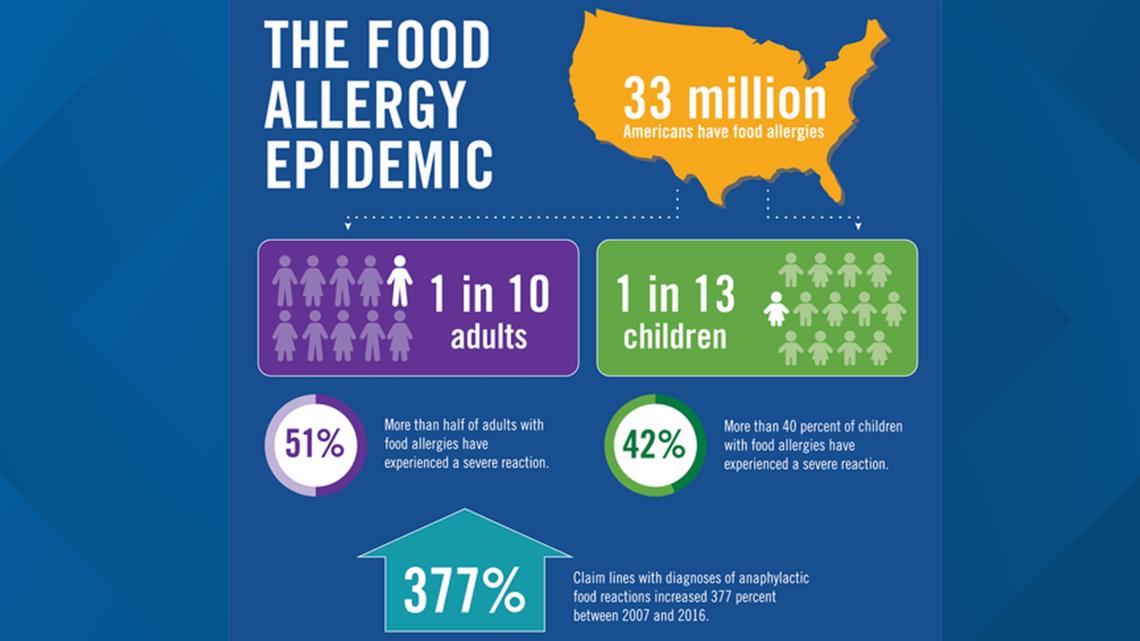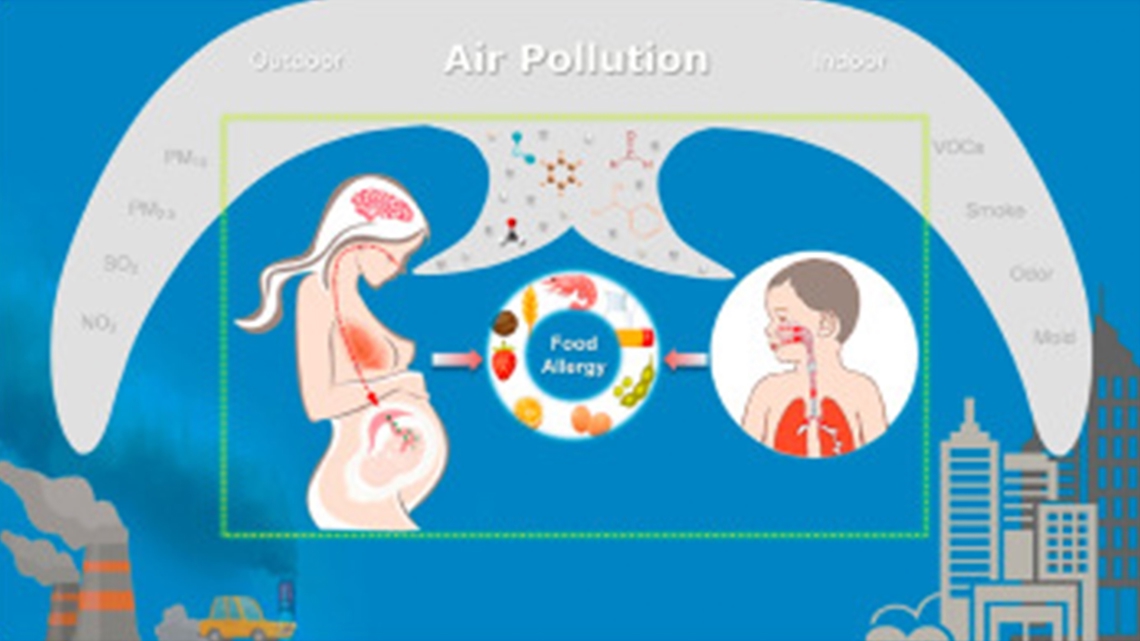LITTLE ROCK, Ark. — Food allergies can affect people of all ages, races, and ethnicities. However, a recent study shows food allergies may be impacting minorities at a higher rate.
According to the study, Asian, Black and Hispanic people were more likely to report having food allergies in comparison to white people. When you take an even closer look at those numbers, people with the highest number of food allergies identified as Hispanic (10.6%) Black (10.6%) and Asian (10.5%)
The survey was administered to over 50,000 households and was made up of more than 78,000 people.
According to Food Allergy Research & Education, food allergies affect about 11% of adults and 8% of children in the United States, totaling around 32 million Americans.


The organization also defines a food allergy as “a medical condition in which exposure to a food triggers a harmful immune response. The immune response, an allergic reaction, occurs because the immune system attacks proteins in the food that are normally harmless. The proteins that trigger the reaction are called allergens.”
Dr. Tamara Perry is the chief of allergy and immunology at UAMS and Arkansas Children's Hospital.
She explained that symptoms of food allergies can include "difficulty breathing, severe cramping, abdominal pain, vomiting, they can actually cause you to pass out."
Many doctors and researchers clearly understand the symptoms of food allergies. However, understanding why they may be impacting minorities at a higher rate is more complex.
We asked Perry if genetics and other lifestyle factors could play a role.
“There may be people that have family members that have food allergies, or other allergy disorders that may be at slightly higher risk of their newborn developing food allergies," Perry said.
The study we examined stopped short of pinpointing an exact cause for the higher rates but called for “additional research to find answers" and called for "more targeted, culturally relevant, equitable, and accessible educational efforts that will improve food allergy outcomes."
Other studies outside of the United States have explored indoor and outdoor environmental factors, such as air pollution, as contributors to these higher rates among minorities.
The study surveyed nearly 2,500 preschool children ages three and six years old in Changsha, China.


Researchers concluded that “early-life exposure to high levels of outdoor and indoor air pollution in China due to the rapid economic growth and fast urbanization in the past decades may contribute to the rapid increase of food allergy in children.”
According to the Environmental Protection Agency, “people of color breathe more particulate air pollution on average.”
The EPA has linked air pollution to contributors to chronic respiratory illnesses and cancer but has yet to explore and determine its relationship with food allergies.
The EPA has said that “there is a need for greater understanding of the factors that may influence whether a population or age group is at increased risk of health effects from air pollution.”
Not only do minorities potentially face a greater risk of experiencing food allergies, but other barriers like cost or location can prevent people from learning about their allergies and how to treat them.
“Sometimes it is a lack of access," Perry said. "We also know in minority populations, unfortunately, we're less likely to be referred to a specialist in comparison to non-white patients."
Perry suggested setting aside time with your primary care doctor as soon as you can to get informed.
“They can be life-threatening, and without a proper diagnosis and a proper treatment plan, people don't really know how they're going to react," Perry said.
Not only are physicians and researchers doing their part to help raise awareness, but national organizations like Food Allergy Research & Education are also working on the front lines.
They've developed a program called "The Fare Neighborhoods Initiative" to better support people facing food allergies in historically marginalized communities.
Little Rock is one of six cities offering this initiative, and it's being done because of reasons like poor access to medication, allergists, and safe food.
Anita Roach is the vice president of health equity and community engagement with FARE. She explained why this initiative focuses on Little Rock.
“In places where food insecurity is high, not only is it difficult to address healthy foods, but when you add on shellfish allergies, peanut allergies, milk, it can get very difficult to access safe foods," Roach said.
The organization is partnering with local entities, including Arkansas Children's Hospital to help educate and bring awareness.
They're also seeking out other local partners to help find food allergy solutions for everyone in central Arkansas.
“We're looking to train stakeholders at food pantries and soup kitchens, as well as community leaders and community health workers, so that they can teach and enable families who are facing food insecurity when there is limited access,” Roach said.
Roach went on to support claims made in the study we examined that found that household income also played a role in higher rates.
The study found that food allergies were most prevalent among households earning $50,000 to $99,999 per year.
According to FARE, for people living in low-income communities, the disease is even more dangerous. That’s because access to medication, allergists, and safe food can be difficult due to cost and availability. On top of that, Black and Latino patients face added challenges—including underdiagnosis and greater risk of hospitalization and death from a severe allergic reaction.
Roach said because of this, as part of their new initiative, Little Rock will be given its own community health worker who will focus on educating food pantries, schools, and other local entities on food allergies and disparities.
The organization also plans to host an event during Food Allergy Awareness Week on May 12-18 at the 12th Street Community Center in Little Rock to assist those who may experience food allergies.

